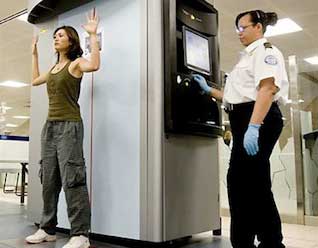 My [Jay Deragon ] post “The Emergence of the
“Know” Profile” stirred numerous responses. Within these responses,
and the subsequent dialog within the blogosphere , came many questions
and perceptions as to the validity of someday actualizing the “know”
profile as described.
My [Jay Deragon ] post “The Emergence of the
“Know” Profile” stirred numerous responses. Within these responses,
and the subsequent dialog within the blogosphere , came many questions
and perceptions as to the validity of someday actualizing the “know”
profile as described.
Given this exchange I thought it would be worthy to examine some of the relevant issues raised and address them by sharing more details of how the “know” profile will emerge and how it will work.
How Can Knowledge be Indexed into an Inventory?
Libraries use numerical indexing to categorize books and the relevant content. The numerical indexing system applies numbers to make a search of relevant and relative words all contained in a taxonomy of subjects. These numeric indexes began in approximately 1894. This “taxonomy” of knowledge assets (contained in libraries of knowledge) can be found in places like Amazon, Encyclopedia Britannica or the Library of Congress etc. Ever seen anything like this ISBN 0-534-39200-8? That is the numerical index number for a book.
Now take that same concept and apply the related methodologies to “indexing an individuals knowledge assets” and what you create is a library of individual knowledge inventory. Computer algebra system would perform the required calculations. The new system would include various versions of algorithms used to index ones knowledge inventory based on education, learning degrees, life experiences and original published content. All of this currently rest in our social profiles but is yet to be indexed to reflect our individual knowledge inventory. Not yet but soon.



 Nestled in the foothills of the Rocky Mountains and fueled by leaders and social hubs such as Micah Baldwin, Tech Stars mentor, #followfriday creator and now chief community caretaker at Graphic.ly of Digital X, and Robert Reich, the founder of Boulder/Denver Tech Meet-up, Boulder's startup community is pumping, even in the midst of recession.
Nestled in the foothills of the Rocky Mountains and fueled by leaders and social hubs such as Micah Baldwin, Tech Stars mentor, #followfriday creator and now chief community caretaker at Graphic.ly of Digital X, and Robert Reich, the founder of Boulder/Denver Tech Meet-up, Boulder's startup community is pumping, even in the midst of recession.

 From an economic development standpoint, research and development involves developing new knowledge about products, processes, and services, and then applying that knowledge to create new and improved products, processes, and services for the market.
From an economic development standpoint, research and development involves developing new knowledge about products, processes, and services, and then applying that knowledge to create new and improved products, processes, and services for the market. The idea of harnessing the vast power of Earth's oceans has fascinated and tantalized humans for centuries. Today, we may be on the cusp of realizing this potential.
The idea of harnessing the vast power of Earth's oceans has fascinated and tantalized humans for centuries. Today, we may be on the cusp of realizing this potential.
 A robust silicon economy and innovation ecosystem is taking root in Europe, just as the global microelectronics industry is coming out of the recession.
A robust silicon economy and innovation ecosystem is taking root in Europe, just as the global microelectronics industry is coming out of the recession.
 We've talked a lot about
We've talked a lot about 


 Used in everything from soup to nutritional supplements and skincare products, sharks are a multi-billion dollar, global, mostly unregulated industry. Now conservationists want to declare eight species endangered.
Used in everything from soup to nutritional supplements and skincare products, sharks are a multi-billion dollar, global, mostly unregulated industry. Now conservationists want to declare eight species endangered. EVER SINCE the sky fell on us some time in 2008 we have, as a country, been struggling to see what we should be doing to get us back into economic health. What we have mainly focused on is controlling public expenditure and trying to shore up the exchequer.
EVER SINCE the sky fell on us some time in 2008 we have, as a country, been struggling to see what we should be doing to get us back into economic health. What we have mainly focused on is controlling public expenditure and trying to shore up the exchequer.
